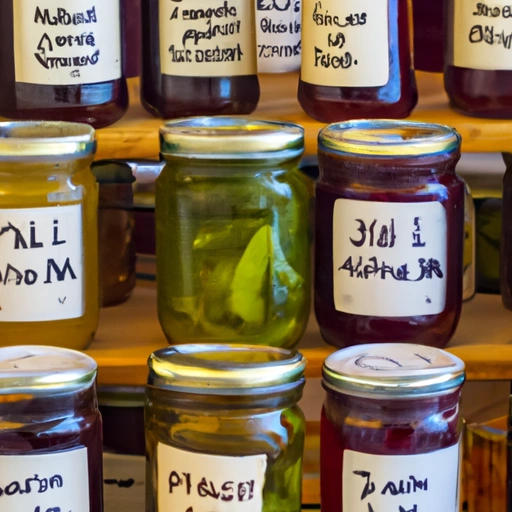Preserve
Description

A 'preserve' is a broad term referring to a type of food product that is made by preserving fruit, vegetables, or other perishable ingredients through various methods such as canning, jamming, jellies, marmalades, and pickling. The primary purpose of preserves is to extend the shelf life of food, often by adding sugar, salt, vinegar, or oil, which inhibits microbial growth and retains flavor, texture, and nutritional value.
Common uses
Preserves are commonly used as spreads on breads, pastries, and crackers, as fillings for cakes and doughnuts, or as accompaniments to cheeses and meats. They are also used to add sweetness and flavor to various dishes, both sweet and savory.
Nutritional value
Calories
Calories in preserves can vary depending on the type and ingredients used. On average, one tablespoon (about 20 grams) of fruit preserves contains approximately 50-60 calories.
Protein
Preserves contain minimal protein, generally less than 0.1 grams per tablespoon.
Fat
Most fruit preserves are fat-free, with 0 grams of fat per serving.
Carbohydrates
Carbohydrates are the primary macronutrient in preserves, with about 13-17 grams per tablespoon, largely from sugars.
Vitamins
Some preserves retain a small amount of vitamins from the fruit, such as vitamin C and vitamin A, but these amounts are typically not significant.
Minerals
Minerals present in preserves may include potassium and small traces of other micronutrients from the original fruit content.
Health benefits
While high in sugar, preserves made with whole fruit retain some of the fruit's fiber, which can aid in digestion. Certain types of preserves, such as those with added pectin, may also provide some health benefits due to the presence of this soluble fiber.
Potential risks
The high sugar content in preserves poses a risk for weight gain if consumed in excess. Preserves can also contribute to dental decay and may not be suitable for individuals with sugar-related health concerns such as diabetes.
Common recipes
Preserves are used in recipes ranging from classic peanut butter and jelly sandwiches to glazes for meats and fillings for pastries. They are also featured in desserts like thumbprint cookies and layered cakes.
Cooking methods
Preserves are typically used as they are, spread on various foods, or incorporated into recipes without further cooking. However, they can also be heated and used as glazes or sauce bases.
Pairing with other ingredients
Preserves pair well with nut butters, cream cheese, yogurt, and are often used to complement the flavors of pork, poultry, and game meats.
Summary
Preserves are a versatile and flavorful ingredient widely used across different cuisines. They provide an easy way to enjoy the taste of fruits and vegetables year-round and can enhance both sweet and savory dishes. However, due to their high sugar content, they should be consumed in moderation as part of a balanced diet.